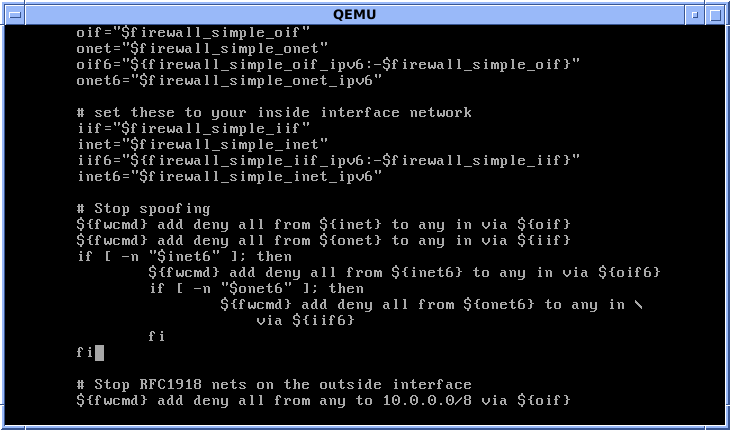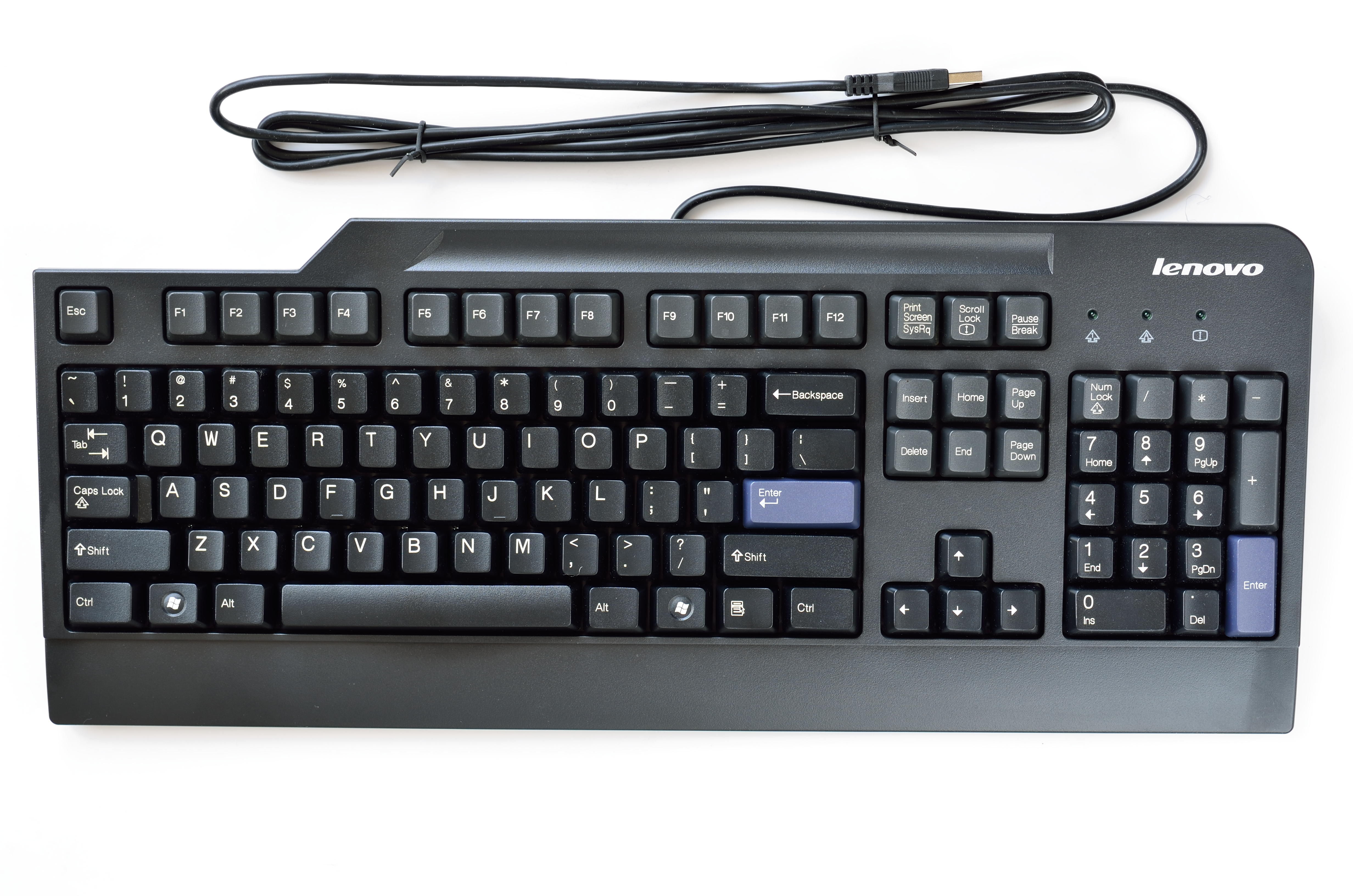|
Polipo
Polipo is a discontinued lightweight caching and forwarding web proxy server. It has a wide variety of uses, from aiding security by filtering traffic; to caching web, DNS and other computer network lookups for a group of people sharing network resources; to speeding up a web server by caching repeated requests. It can be configured to use on-disk cache and serve cached content when offline and perform various forms of content filtering. To minimize latency, Polipo both pipelines multiple resource requests and multiplexes multiple transactions onto the same TCP/IP connection. Polipo is HTTP 1.1-compliant, supports IPv4, IPv6, traffic filtering and privacy-enhancement. Polipo is free software released under the MIT License. Polipo ceased to be maintained on 6 November 2016 due to the increasingly widespread use of encryption (i.e. HTTPS) making caching proxies obsolete. Design Polipo is designed to be used as a personal web cache or a web cache shared among a few users to ... [...More Info...] [...Related Items...] OR: [Wikipedia] [Google] [Baidu] |
HTTP Pipelining
HTTP pipelining is a feature of HTTP/1.1, which allows multiple HTTP requests to be sent over a single TCP connection without waiting for the corresponding responses. HTTP/1.1 requires servers to respond to pipelined requests correctly, with non-pipelined but valid responses even if server does not support HTTP pipelining. Despite this requirement, many legacy HTTP/1.1 servers do not support pipelining correctly, forcing most HTTP clients to not use HTTP pipelining. The technique was superseded by multiplexing via HTTP/2, which is supported by most modern browsers. In HTTP/3, multiplexing is accomplished via QUIC which replaces TCP. This further reduces loading time, as there is no head-of-line blocking even if some packets are lost. Motivation and limitations The pipelining of requests results in a dramatic improvement in the loading times of HTML pages, especially over high latency connections such as satellite Internet connections. The speedup is less apparent on broadban ... [...More Info...] [...Related Items...] OR: [Wikipedia] [Google] [Baidu] |
Web Cache
A web cache (or HTTP cache) is a system for optimizing the World Wide Web. It is implemented both client-side and server-side. The caching of multimedia and other files can result in less overall delay when web browser, browsing the Web. Parts of the system Forward and reverse A forward cache is a cache outside the web server's network, e.g. in the client's web browser, in an ISP, or within a corporate network. A network-aware forward cache only caches heavily accessed items. A proxy server sitting between the client and web server can evaluate HTTP headers and choose whether to store web content. A reverse cache sits in front of one or more web servers, accelerating requests from the Internet and reducing peak server load. This is usually a content delivery network (CDN) that retains copies of web content at various points throughout a network. HTTP options The Hypertext Transfer Protocol (HTTP) defines three basic mechanisms for controlling caches: freshness, validation, and ... [...More Info...] [...Related Items...] OR: [Wikipedia] [Google] [Baidu] |
Forward Proxy H2g2bob
Forward is a relative direction, the opposite of backward. Forward may also refer to: People *Forward (surname) Sports * Forward (association football) * Forward (basketball), including: ** Point forward ** Power forward (basketball) ** Small forward * Forward (ice hockey) ** Power forward (ice hockey) * In rugby football: ** Forwards (rugby league), in rugby league football ** Forwards (rugby union), in rugby union football * Forward Sports, a Pakistan sportswear brand * BK Forward, a Swedish club for association football and bandy Politics * Avante (political party) (Portuguese for ''forward''), a political party in Brazil * Endavant (Catalan for ''forward''), a socialist pro-independence organization in Catalonia * Forward (Belgium), a political party in Belgium * Forward (Bosnia and Herzegovina), a political party in Bosnia and Herzegovina * Forward (Denmark), a political party in Denmark * Forward (Greenland), a political party in Greenland * Forward Party (United State ... [...More Info...] [...Related Items...] OR: [Wikipedia] [Google] [Baidu] |
Shell Script
A shell script is a computer program designed to be run by a Unix shell, a command-line interpreter. The various dialects of shell scripts are considered to be command languages. Typical operations performed by shell scripts include file manipulation, program execution, and printing text. A script which sets up the environment, runs the program, and does any necessary cleanup or logging, is called a wrapper. The term is also used more generally to mean the automated mode of running an operating system shell; each operating system uses a particular name for these functions including batch files (MSDos-Win95 stream, OS/2), command procedures (VMS), and shell scripts (Windows NT stream and third-party derivatives like 4NT—article is at cmd.exe), and mainframe operating systems are associated with a number of terms. Shells commonly present in Unix and Unix-like systems include the Korn shell, the Bourne shell, and GNU Bash. While a Unix operating system may have a different ... [...More Info...] [...Related Items...] OR: [Wikipedia] [Google] [Baidu] |
User (computing)
A user is a person who uses a computer or network service. A user often has a user account and is identified to the system by a username (or user name). Some software products provide services to other systems and have no direct end users. End user End users are the ultimate human users (also referred to as operators) of a software product. The end user stands in contrast to users who support or maintain the product such as sysops, database administrators and computer technicians. The term is used to abstract and distinguish those who only use the software from the developers of the system, who enhance the software for end users. In user-centered design, it also distinguishes the software operator from the client who pays for its development and other stakeholders who may not directly use the software, but help establish its requirements. This abstraction is primarily useful in designing the user interface, and refers to a relevant subset of characteristics t ... [...More Info...] [...Related Items...] OR: [Wikipedia] [Google] [Baidu] |
Configuration File
A configuration file, a.k.a. config file, is a computer file, file that stores computer data, data used to configure a software system such as an application software, application, a server (computing), server or an operating system. Some applications provide a tool to create, modify, and verify the syntax of their configuration files sometimes via graphical user interface (GUI). For context, system administrators may be expected to create and modify plain text, text config files via a text editor. For server processes and operating-system settings, there is often no standard tool, but operating systems may provide graphical interfaces such as YaST or debconf. Some computer programs only read their configuration files at Booting, startup. Others periodically check the configuration files for changes. Users can instruct some programs to re-read the configuration files and apply the changes to the current process, or indeed to read arbitrary files as a configuration file. There ar ... [...More Info...] [...Related Items...] OR: [Wikipedia] [Google] [Baidu] |
Computer Keyboard
A computer keyboard is a built-in or peripheral input device modeled after the typewriter keyboard which uses an arrangement of buttons or Push-button, keys to act as Mechanical keyboard, mechanical levers or Electronic switching system, electronic switches. Replacing early punched cards and paper tape technology, interaction via teleprinter-style keyboards have been the main input device, input method for computers since the 1970s, supplemented by the computer mouse since the 1980s, and the touchscreen since the 2000s. Keyboard keys (buttons) typically have a set of characters Engraving, engraved or Printing, printed on them, and each press of a key typically corresponds to a single written symbol. However, producing some symbols may require pressing and holding several keys simultaneously or in sequence. While most keys produce character (computing), characters (Letter (alphabet), letters, Numerical digit, numbers or symbols), other keys (such as the escape key) can prompt the ... [...More Info...] [...Related Items...] OR: [Wikipedia] [Google] [Baidu] |
Command-line Interface
A command-line interface (CLI) is a means of interacting with software via command (computing), commands each formatted as a line of text. Command-line interfaces emerged in the mid-1960s, on computer terminals, as an interactive and more user-friendly alternative to the non-interactive mode available with punched cards. For a long time, a CLI was the most common interface for software, but today a graphical user interface (GUI) is more common. Nonetheless, many programs such as operating system and software development utility software, utilities still provide CLI. A CLI enables automation, automating computer program, programs since commands can be stored in a scripting language, script computer file, file that can be used repeatedly. A script allows its contained commands to be executed as group; as a program; as a command. A CLI is made possible by command-line interpreters or command-line processors, which are programs that execute input commands. Alternatives to a CLI ... [...More Info...] [...Related Items...] OR: [Wikipedia] [Google] [Baidu] |
HTTPS
Hypertext Transfer Protocol Secure (HTTPS) is an extension of the Hypertext Transfer Protocol (HTTP). It uses encryption for secure communication over a computer network, and is widely used on the Internet. In HTTPS, the communication protocol is encrypted using Transport Layer Security (TLS) or, formerly, Secure Sockets Layer (SSL). The protocol is therefore also referred to as HTTP over TLS, or HTTP over SSL. The principal motivations for HTTPS are authentication of the accessed website and protection of the privacy and integrity of the exchanged data while it is in transit. It protects against man-in-the-middle attacks, and the bidirectional block cipher encryption of communications between a client and server protects the communications against eavesdropping and tampering. The authentication aspect of HTTPS requires a trusted third party to sign server-side digital certificates. This was historically an expensive operation, which meant fully authenticated HTTPS conn ... [...More Info...] [...Related Items...] OR: [Wikipedia] [Google] [Baidu] |
IPv6
Internet Protocol version 6 (IPv6) is the most recent version of the Internet Protocol (IP), the communication protocol, communications protocol that provides an identification and location system for computers on networks and routes traffic across the Internet. IPv6 was developed by the Internet Engineering Task Force (IETF) to deal with the long-anticipated problem of IPv4 address exhaustion, and was intended to replace IPv4. In December 1998, IPv6 became a Draft Standard for the IETF, which subsequently ratified it as an Internet Standard on 14 July 2017. Devices on the Internet are assigned a unique IP address for identification and location definition. With the rapid growth of the Internet after commercialization in the 1990s, it became evident that far more addresses would be needed to connect devices than the 4,294,967,296 (232) IPv4 address space had available. By 1998, the IETF had formalized the successor protocol, IPv6 which uses 128-bit addresses, theoretically all ... [...More Info...] [...Related Items...] OR: [Wikipedia] [Google] [Baidu] |
IPv4
Internet Protocol version 4 (IPv4) is the first version of the Internet Protocol (IP) as a standalone specification. It is one of the core protocols of standards-based internetworking methods in the Internet and other packet-switched networks. IPv4 was the first version deployed for production on SATNET in 1982 and on the ARPANET in January 1983. It is still used to route most Internet traffic today, even with the ongoing deployment of Internet Protocol version 6 (IPv6), its successor. IPv4 uses a 32-bit address space which provides 4,294,967,296 (232) unique addresses, but large blocks are reserved for special networking purposes. Purpose The Internet Protocol ("IP") is the protocol that defines and enables internetworking at the internet layer of the Internet Protocol Suite. It gives the Internet a global-scale logical addressing system which allows the routing of IP Network packet, data packets from a source host to the next router that is one Hop (networking), hop closer t ... [...More Info...] [...Related Items...] OR: [Wikipedia] [Google] [Baidu] |
HTTP 1
HTTP (Hypertext Transfer Protocol) is an application layer protocol in the Internet protocol suite model for distributed, collaborative, hypermedia information systems. HTTP is the foundation of data communication for the World Wide Web, where hypertext documents include hyperlinks to other resources that the user can easily access, for example by a mouse click or by tapping the screen in a web browser. Development of HTTP was initiated by Tim Berners-Lee at CERN in 1989 and summarized in a simple document describing the behavior of a client and a server using the first HTTP version, named 0.9. That version was subsequently developed, eventually becoming the public 1.0. Development of early HTTP Requests for Comments (RFCs) started a few years later in a coordinated effort by the Internet Engineering Task Force (IETF) and the World Wide Web Consortium (W3C), with work later moving to the IETF. HTTP/1 was finalized and fully documented (as version 1.0) in 1996. It evolved (a ... [...More Info...] [...Related Items...] OR: [Wikipedia] [Google] [Baidu] |





